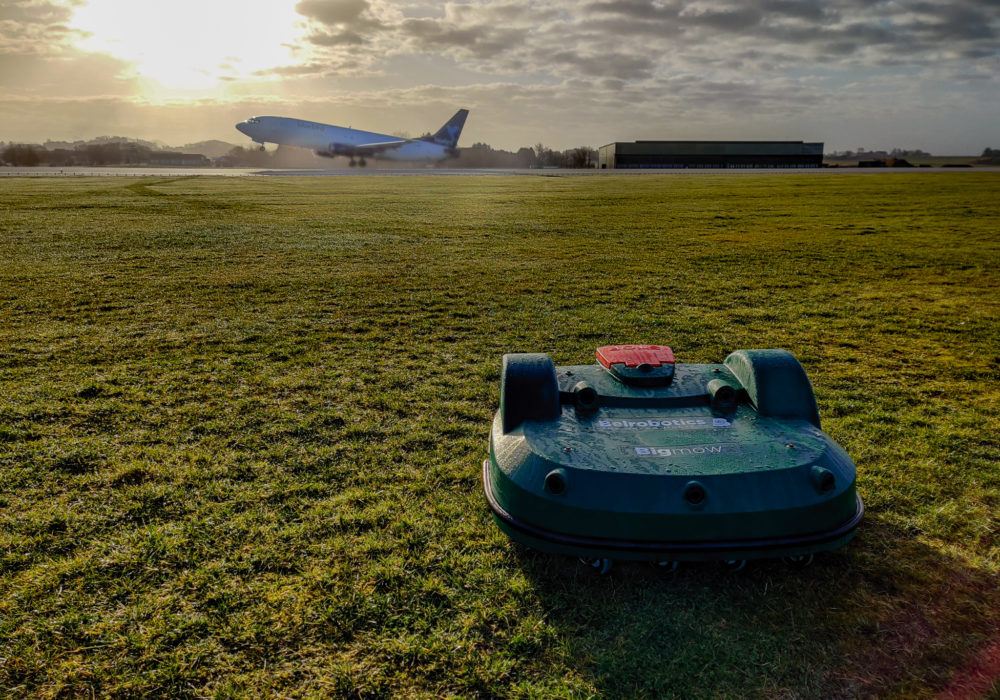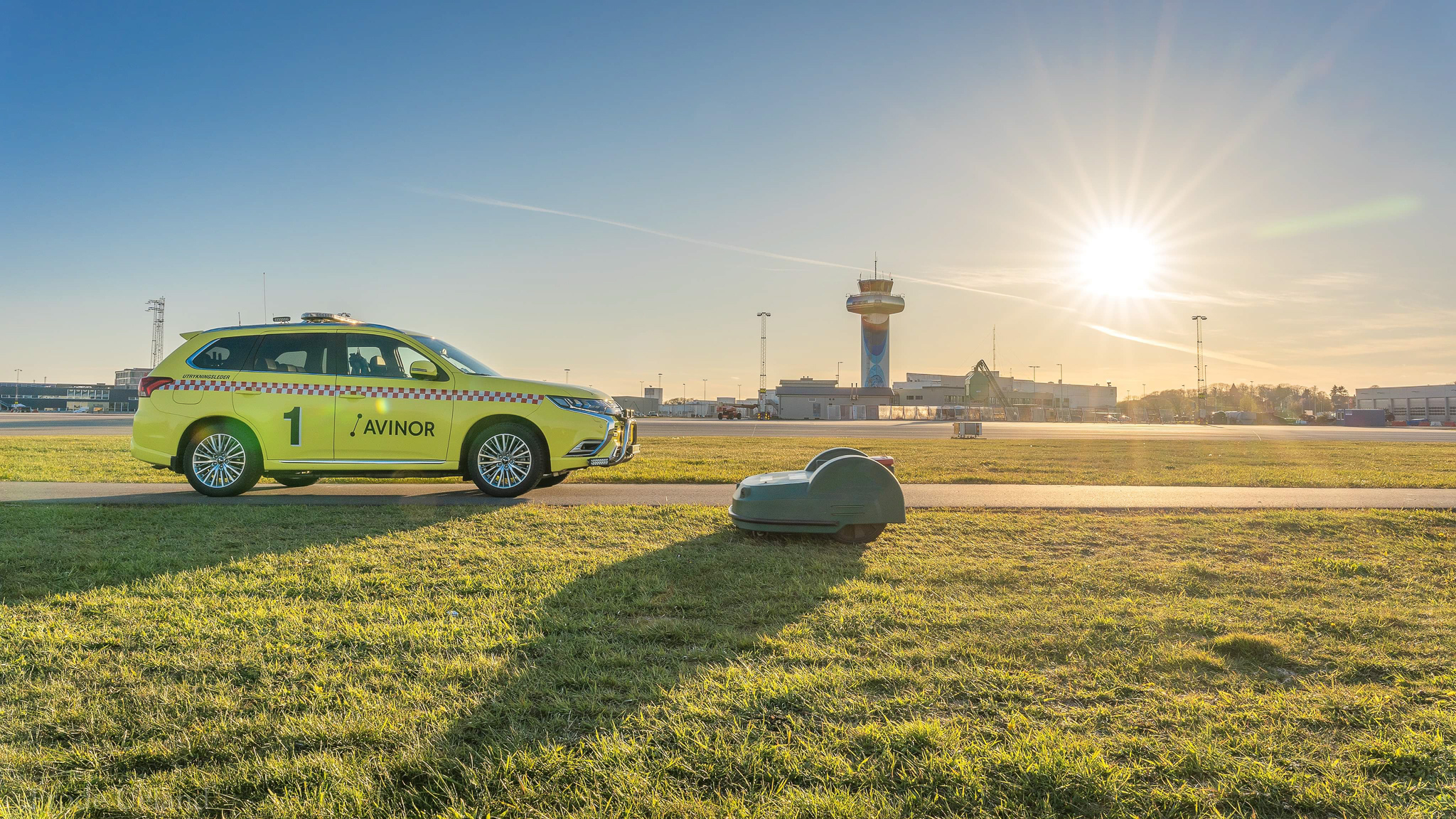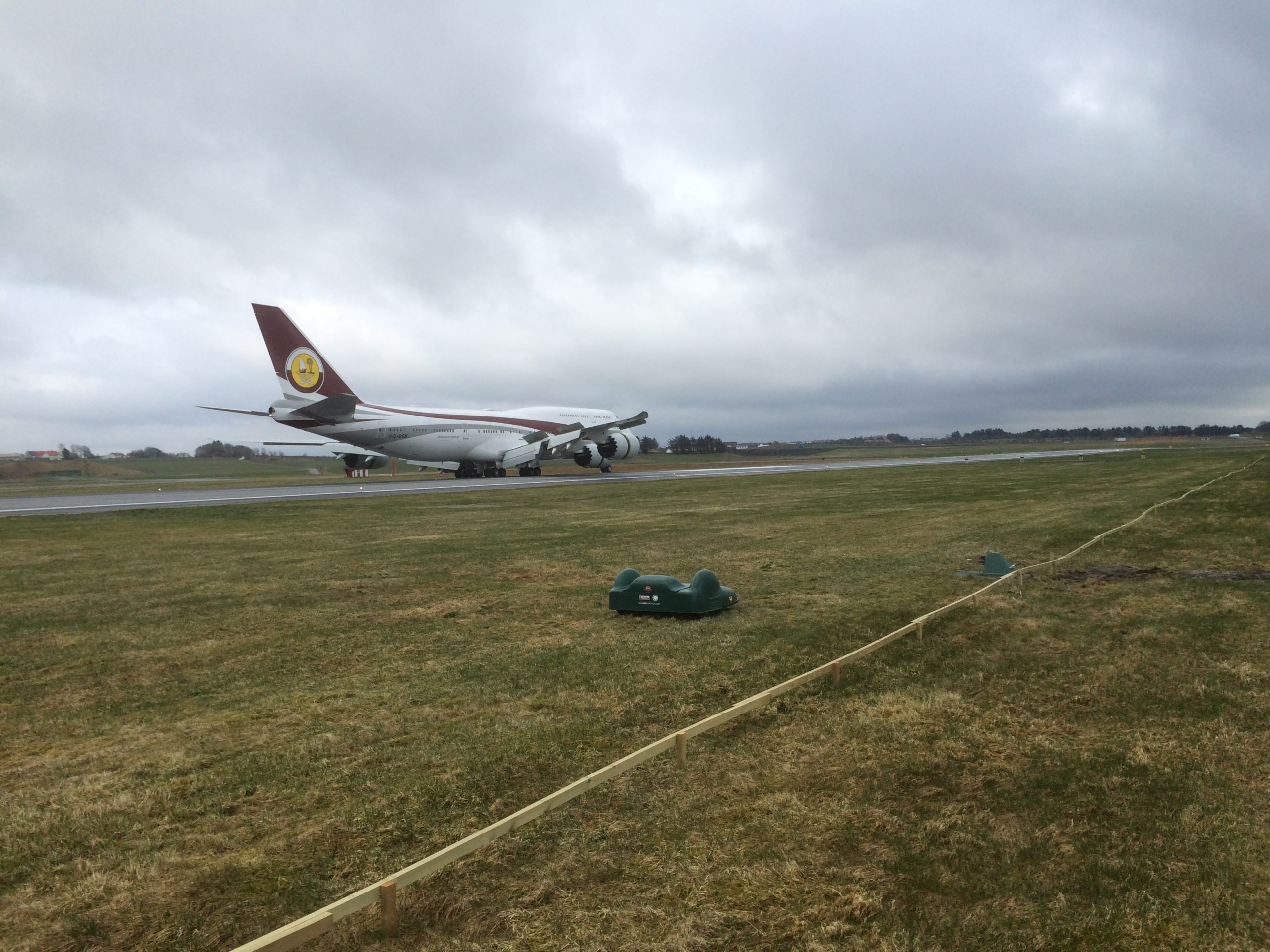
Whatever the risk and security management, airports will always have their specific needs and regulations, over and above protection of the local flora and fauna and maintenance of green spaces. Management and reduction of CO2 emissions is also gaining critical importance in a world in which air travel can hardly be accused of enjoying the best of reputations.
All of the above points are, of course, critical, but they cannot camouflage the importance of cost management. All these realities taken together argue the case in favour of the use of automatic mowers, since they allow positive action on each one of these points.
Certain airports, such as Sola in Norway, are currently using as many as 26 Belrobotics robots 24/7. However, so far there are no precise or objective studies available. In early August 2021 Purdue University published a study on the impact of automatic robot mowers on the sustainable aspect of an airport. This university has an airport (KLAF) that was the scene of a study conducted with the aid of an Echorobotics robots. Here are just some of its analyses:

Risk management
Risk management is obviously of critical importance for airports. Automation does allow the removal of some of the risks for the staff (mowing in critical zones) but, on the other hand, it must of course be checked so as to be sure that it does not in itself constitute a risk
In the case of a robot mower, Purdue University Airport opted for certain specific zones so as to guarantee maximum safety, but was satisfied with the safety procedures in connection with the mower:
- The peripheral cable that prevents the mower from escaping the predefined zone. The power supply to the mower is cut outside the zone.
- The internal software preventing the mower from being activated outside its zone (and therefore reduced interest in stealing the robot mower).
- The mower’s proximity-sensors prevent the risk of collision with an object or with a person.
- The application allows remote tracking of the status of the mower and the sending of a certain number of commands.
To guarantee near-zero risk they also have an integrated cross-rail physical barrier system.
One of the teething problems seemed to be the number of alerts during the first tests. Even so, with 23 alerts over 562 hours of mowing in the first test, the robot mower booked only 2 alerts over 1 115 hours of mowing in the final test after modifications to the grounds and the software. This shows the importance of correct installation and a certain number of tests.

Reduced costs
One of the main advantages of this study seems to be the reduction of necessary staff and the resulting reduction of associated costs. It is, of course, clear that personnel will always be necessary to carry out the inspection and maintenance of the grounds, robots and charging station, but these points are minor compared with the time required for a “good, old-fashioned” mow. The university even made arrangement for comparative tests to be conducted, measured against a conventional mow.
One of the notes made concerned the random mow and the possible benefits of a mow with a GPR RTK model. This option is already being developed and is now available, much further increasing the efficiency of the robot, since it can now cut in straight lines. This development is certainly much more important for an airport. It should be remembered that security considerations make the use of a robot difficult in certain critical zones. But, as the study explains, it is possible to shut down certain zones during slack periods, often at night. With an RTK model you can work up to 3 times more surface than with a conventional model. So you can cover a much bigger surface during these quiet times!
Reduction of CO2 emissions
Fuel requirements, mostly in conventional mowing methods, can hardly be overstated. In the U.S.A. they represent more than 300 million litres of fuel and 5% of atmospheric pollution. Opting for a 100% electric alternative would allow reduction of these emissions of CO2 and the carbon footprint of an airport. As the study indicates, this would also be a visible sign of these efforts.
So, robot mowers are very interesting little helpers for the most complex and secured areas, airports, industrial zones, etc. If you would like more information on their possibilities, please do not hesitate to contact us.